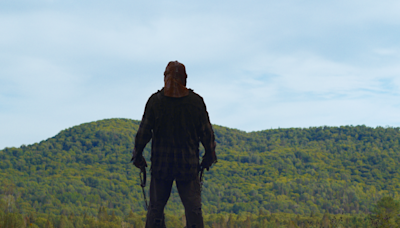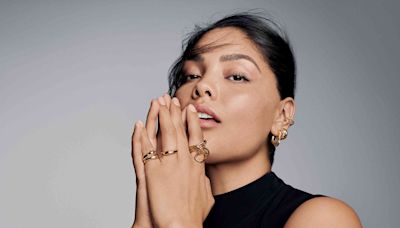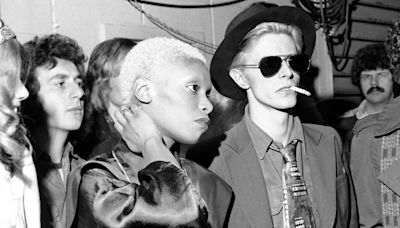Search results
- DictionaryBa·roque/bəˈrōk/
adjective
- 1. relating to or denoting a style of European architecture, music, and art of the 17th and 18th centuries that followed mannerism and is characterized by ornate detail. In architecture the period is exemplified by the palace of Versailles and by the work of Bernini in Italy. Major composers include Vivaldi, Bach, and Handel; Caravaggio and Rubens are important baroque artists.
noun
- 1. the baroque style or period: "the interior of the church is in lavish baroque"
People also ask
What does Baroque mean?
What is Baroque art?
Where did Baroque style come from?
What is the difference between Rococo and Baroque architecture?
Learn the origin, synonyms, and examples of the word baroque, which can describe a style of art, music, or pearls. Baroque is often used to mean extravagant, elaborate, or irregular.
The Baroque ( UK: / bəˈrɒk / bə-ROK, US: /- ˈroʊk / -ROHK; French: [baʁɔk]) or Baroquism [1] is a Western style of architecture, music, dance, painting, sculpture, poetry, and other arts that flourished from the early 17th century until the 1750s. [2] It followed Renaissance art and Mannerism and preceded the Rococo (in the past ...
Baroque definition: of or relating to a style of architecture and art originating in Italy in the early 17th century and variously prevalent in Europe and the New World for a century and a half, characterized by free and sculptural use of the classical orders and ornament, by forms in elevation and plan suggesting movement, and by dramatic effect in which architecture, painting, sculpture, and ...
Baroque is an adjective and a noun that describes a style of art and music with many decorations and complex forms. Learn how to use baroque in sentences and see examples from different fields and languages.
- Overview
- The origin of the term
- Three main tendencies of the era
The term Baroque probably derived from the Italian word barocco, which philosophers used during the Middle Ages to describe an obstacle in schematic logic. Subsequently, the word came to denote any contorted idea or involute process of thought. Another possible source is the Portuguese word barroco (Spanish barrueco), used to describe an imperfectly shaped pearl. In art criticism the word Baroque has come to describe anything irregular, bizarre, or otherwise departing from rules and proportions established during the Renaissance. Until the late 19th century the term always carried the implication of odd, exaggerated, and overdecorated. It was only with Heinrich Wölfflin’s pioneering study, Renaissance und Barock (1888), that the term was used as a stylistic designation rather than as a term of thinly veiled abuse and that a systematic formulation of the characteristics of Baroque style was achieved.
Read more below: The origin of the term
Heinrich Wölfflin
Read about historian Heinrich Wölfflin, who refashioned the word Baroque from a thinly veiled term of abuse to the name of a distinctive style and period.
What are the characteristics of Baroque art and architecture?
The work that distinguishes the Baroque period is stylistically complex and even contradictory. Currents of naturalism and Classicism, for example, coexisted and intermingled with the typical Baroque style. In general, however, the desire to evoke emotional states by appealing to the senses, often in dramatic ways, underlies its manifestations. Some of the qualities most frequently associated with the Baroque are grandeur, sensuous richness, drama, dynamism, movement, tension, emotional exuberance, and a tendency to blur distinctions between the various arts.
The term Baroque probably ultimately derived from the Italian word barocco, which philosophers used during the Middle Ages to describe an obstacle in schematic logic. Subsequently the word came to denote any contorted idea or involuted process of thought. Another possible source is the Portuguese word barroco (Spanish barrueco), used to describe an irregular or imperfectly shaped pearl, and this usage still survives in the jeweler’s term baroque pearl.
In art criticism the word Baroque came to be used to describe anything irregular, bizarre, or otherwise departing from established rules and proportions. This biased view of 17th-century art styles was held with few modifications by critics from Johann Winckelmann to John Ruskin and Jacob Burckhardt, and until the late 19th century the term always carried the implication of odd, grotesque, exaggerated, and overdecorated. It was only with Heinrich Wölfflin’s pioneer study Renaissance und Barock (1888) that the term Baroque was used as a stylistic designation rather than as a term of thinly veiled abuse, and a systematic formulation of the characteristics of Baroque style was achieved.
Three broader cultural and intellectual tendencies had a profound impact on Baroque art as well as Baroque music. The first of these was the emergence of the Counter-Reformation and the expansion of its domain, both territorially and intellectually. By the last decades of the 16th century the refined, courtly style known as Mannerism had ceased to be an effective means of expression, and its inadequacy for religious art was being increasingly felt in artistic circles. To counter the inroads made by the Reformation, the Roman Catholic Church after the Council of Trent (1545–63) adopted a propagandistic stance in which art was to serve as a means of extending and stimulating the public’s faith in the church. To this end the church adopted a conscious artistic program whose art products would make an overtly emotional and sensory appeal to the faithful. The Baroque style that evolved from this program was paradoxically both sensuous and spiritual; while a naturalistic treatment rendered the religious image more accessible to the average churchgoer, dramatic and illusory effects were used to stimulate piety and devotion and convey an impression of the splendour of the divine. Baroque church ceilings thus dissolved in painted scenes that presented vivid views of the infinite to the observer and directed the senses toward heavenly concerns.
The second tendency was the consolidation of absolute monarchies, accompanied by a simultaneous crystallization of a prominent and powerful middle class, which now came to play a role in art patronage. Baroque palaces were built on an expanded and monumental scale in order to display the power and grandeur of the centralized state, a phenomenon best displayed in the royal palace and gardens at Versailles. Yet at the same time the development of a picture market for the middle class and its taste for realism may be seen in the works of the brothers Le Nain and Georges de La Tour in France and in the varied schools of 17th-century Dutch painting. (For a detailed discussion of this phenomenon, see Rembrandt van Rijn.)
The third tendency was a new interest in nature and a general broadening of human intellectual horizons, spurred by developments in science and by explorations of the globe. These simultaneously produced a new sense both of human insignificance (particularly abetted by the Copernican displacement of the Earth from the centre of the universe) and of the unsuspected complexity and infinitude of the natural world. The development of 17th-century landscape painting, in which humans are frequently portrayed as minute figures in a vast natural setting, is indicative of this changing awareness of the human condition.
Special offer for students! Check out our special academic rate and excel this spring semester!
- The Editors of Encyclopaedia Britannica
Baroque is an adjective and a noun that describes a style of art and architecture with many decorations and details. Learn how to use baroque in sentences and see examples of baroque buildings, music, and logic.
Baroque period, (17th–18th century) Era in the arts that originated in Italy in the 17th century and flourished elsewhere well into the 18th century. It embraced painting, sculpture, architecture, decorative arts, and music. The word, derived from a Portuguese term for an irregularly shaped pearl and originally used derogatorily, has long ...



